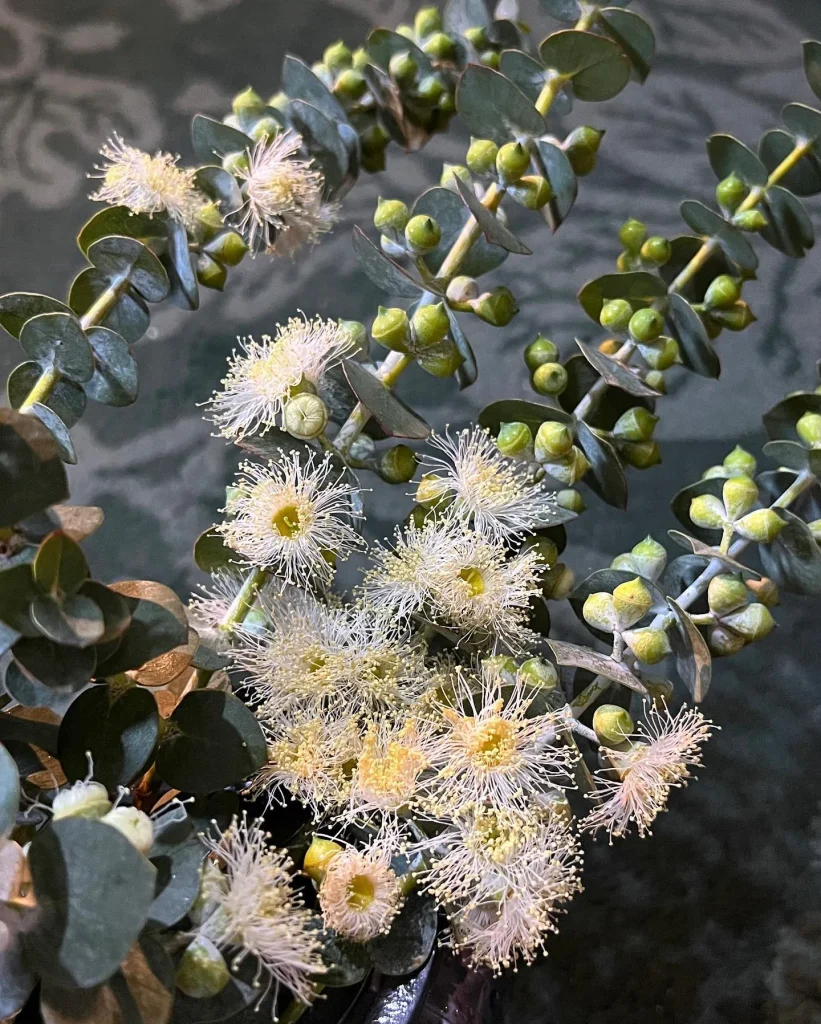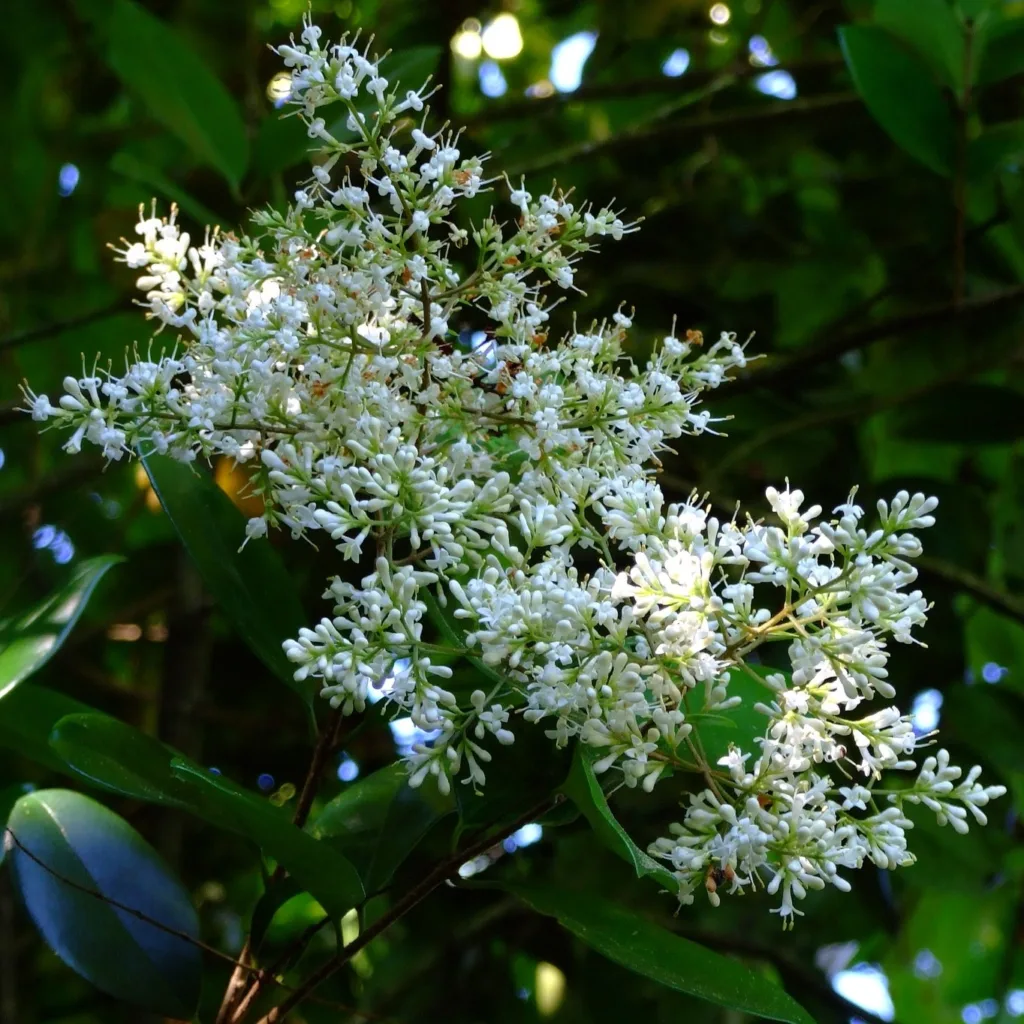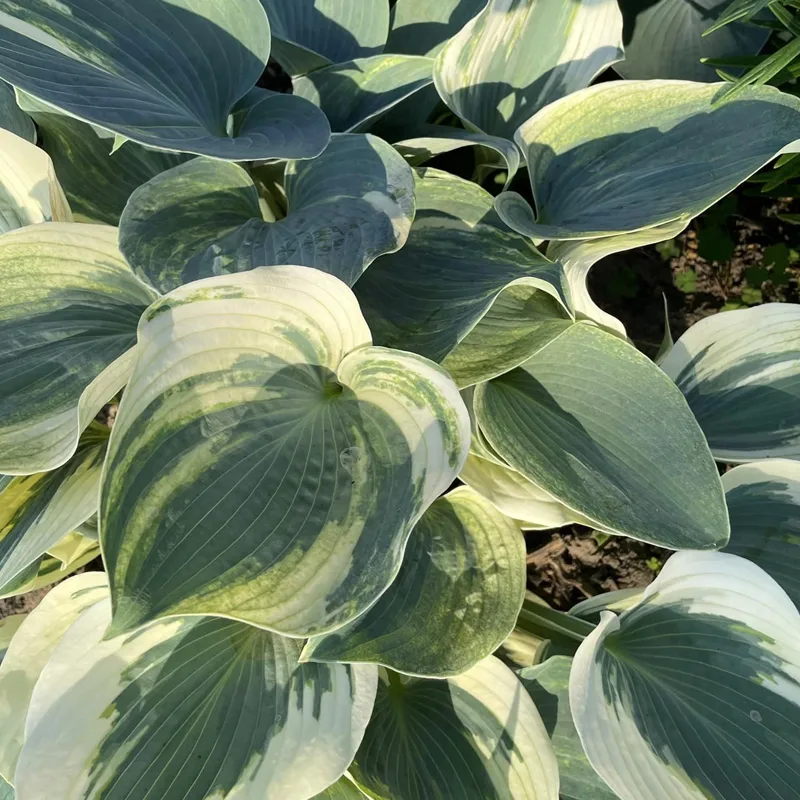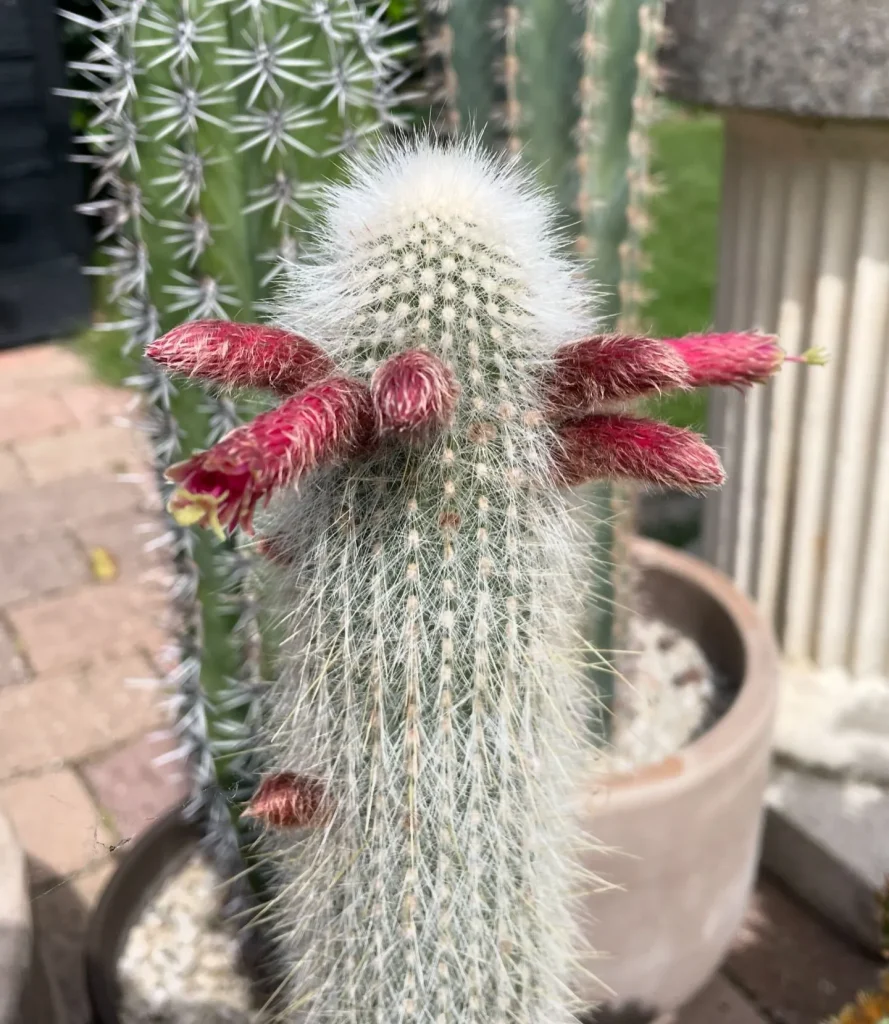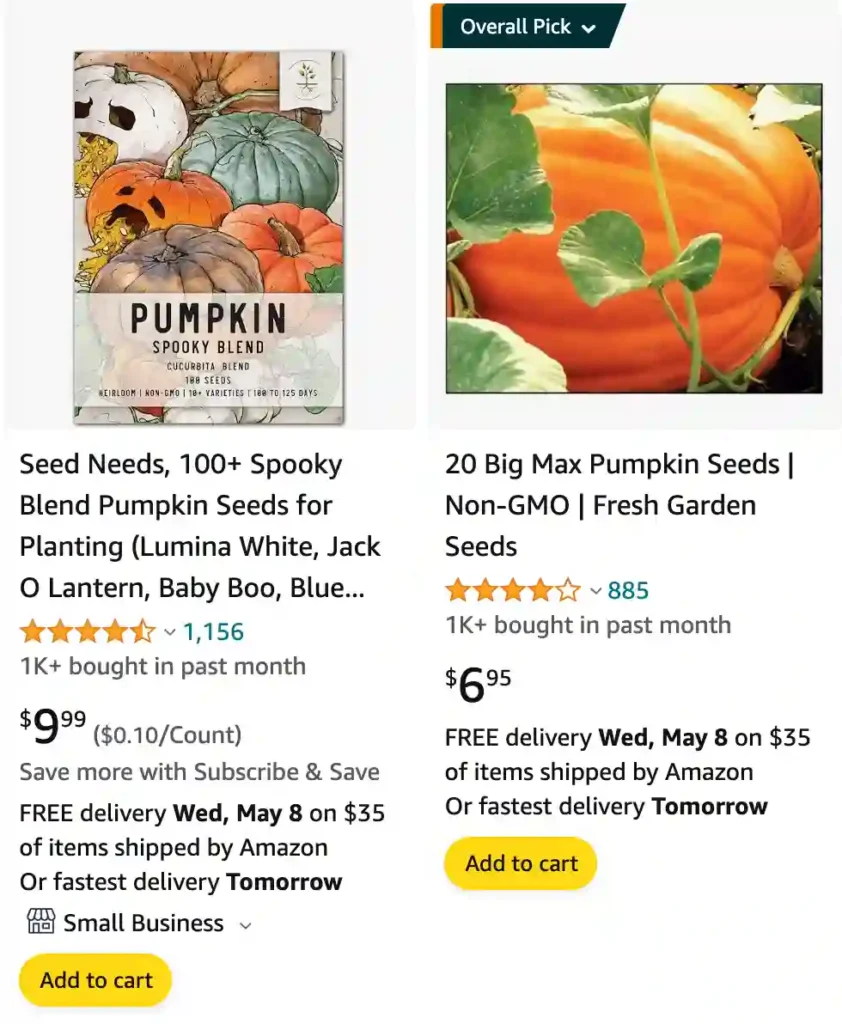
What does a pumpkin plant look like?
The first time I saw a full-grown pumpkin plant sprawl out in the garden, I was amazed by its wildness. It wasn’t like the neat rows of vegetables I was used to. This pumpkin patch was a tangle of thick vines, easily as long as my arms, snaking across the ground. The leaves were huge and deeply lobed, a kind of rough, hairy green that surprised me. There were these bright yellow flowers scattered throughout, much bigger than any squash blossoms I’d seen before, and they attracted buzzing bees all afternoon. It felt like a jungle in miniature, and way cooler than anything growing in pots on my windowsill.
How big does a pumpkin plant get?
Let me tell you, those pumpkin vines are sneaky growers! They start out all cute and manageable, but then one day you turn around and they’ve doubled in size, creeping across the garden like a green octopus. I swear, I wasn’t paying attention for a week and one vine had taken over half the strawberry patch! They easily sprawl out 20 feet or more, and don’t even get me started on the pumpkins themselves. Those things can grow bigger than a beach ball, especially if you’re giving them the right care. It’s pretty impressive to see what started as a tiny seed turn into this giant orange orb in just a few months.
How to prune a pumpkin plant?
Pruning pumpkin vines can feel a little barbaric at first, but trust me, it’s all for the greater good (of the pumpkins, that is). Those sprawling vines might look impressive, but they’re draining energy the plant could be putting into growing those big, beautiful pumpkins. The key is to be strategic about it. I usually wait until the vines get a good few feet long, then I pinch off the tips of the runners. This encourages the plant to focus its growth on the existing fruits and secondary vines. Also, keep an eye out for those skinny little tertiary vines that sprout from the leaf nodes. Those guys are just hitchhikers, stealing nutrients without producing any pumpkins. I ruthlessly snip those off whenever I see them. It might seem excessive, but I’ve seen the difference a good pruning makes – bigger, healthier pumpkins that make all the jack-o-lantern carving (or delicious pumpkin pie baking) worthwhile!
Why is my pumpkin plant turning yellow?
Oh no, yellowing pumpkin leaves! That can be a real worry, especially when those fruits are starting to form. There’s a few things it could be based on my experience. First culprit is always water. Pumpkins are thirsty guys, especially when the weather heats up. If I’ve been slacking on watering during a hot spell, I definitely see the leaves getting a little sad and yellow, especially the older ones on the outside. Then there’s nutrients. Pumpkins are heavy feeders, and if the soil isn’t rich enough, they’ll start pulling what they need from the older leaves, making them turn yellow. I’ve had some luck with a mid-season feeding of compost tea or diluted liquid fertilizer to perk them back up. Let’s hope it’s not something more serious, but if the yellowing is spreading rapidly or there’s weird spots on the leaves, I might take a closer look for pests or diseases. Better safe than sorry when it comes to those giant pumpkins!
How to take care of a pumpkin plant?
Taking care of a pumpkin plant is like raising a leafy green giant – it’s rewarding but requires some muscle! Here’s what I’ve learned through trial and error. First things first, location is key. Pick a sunny spot with plenty of space, because those vines will sprawl like crazy. We’re talking easily over 20 feet in all directions! Make sure the soil is fertile – I usually mix in some compost or aged manure before planting. Watering is crucial, especially during hot weather. Think deep soakings at least once a week, aiming for the base of the plant rather than the leaves. Speaking of leaves, a little pruning goes a long way. Pinch off runner vine tips to encourage the plant to focus on the pumpkins, and ruthlessly snip off those skinny secondary vines that steal nutrients. And keep an eye on those leaves! Yellowing foliage could mean underwatering, lack of nutrients, or even pests. A good dose of compost tea or diluted fertilizer can often work wonders. With a little TLC, you’ll be well on your way to a bumper crop of giant gourds!
How much water does a pumpkin plant need?
Pumpkins are thirsty fellows, like having a constantly sweating athlete in your garden! They’re mostly water themselves, so it makes sense. In my experience, a good rule of thumb is about 1 inch of water per week. But that’s just a starting point – weather plays a big role. During scorching hot spells, I might need to water more frequently, maybe every other day or so, to keep the soil moist but not soggy. The best way to tell is to stick your finger in the dirt – if it feels dry down to your first knuckle, it’s watering time. Soaker hoses or drip irrigation are great options to deliver water right to the roots and avoid wasting any. Mulch around the base of the plant is another trick I use – it helps retain moisture in the soil and keeps those weeds down. Overwatering is a risk too, though, so watch out for pooling water or mushy leaves – that can lead to root rot. The key is finding the happy medium – enough water to keep your pumpkin plant happy and growing those big, beautiful gourds!
How to pollinate a pumpkin plant?
Pumpkin pollination can be a fun little science experiment in your garden, especially if you’re not used to it. Here’s what I’ve discovered works best for me.
The first thing is to identify the flower types. Pumpkin plants have separate male and female flowers. The male flowers are smaller and easier to spot – they’re the ones with just a single stalk and a cluster of yellow stamens in the center. Those stamens hold all the pollen. The female flowers, on the other hand, are rounder at the base because they’re the ones that will eventually turn into the pumpkins. They have a little bulbous ovary in the center, with a sticky stigma sticking out – that’s what the pollen needs to stick to.
Now, the tricky part: sometimes the male and female flowers don’t bloom at the same time. But don’t despair! You can be a busy bee yourself. The easiest way is to use a small, soft paintbrush or cotton swab. Gently dab it against the stamens of a male flower, collecting the pollen. Then, take the paintbrush or swab and carefully brush it against the stigma of the female flower. Try to get pollen on all sides of the stigma for the best chance of success.
If you’re feeling fancy, you can even remove the male flower completely and use it like a little pollen-dusted paintbrush on the female flowers. It might feel a bit silly, but it works! The best time to pollinate is early in the morning, when the flowers are just opening. With a little patience and some pollen transfer, you’ll be well on your way to giant pumpkin glory!
Why is my pumpkin plant dying?
There are a few reasons why your pumpkin plant might be dying, and the culprit depends on the symptoms you’re seeing. Here’s what to look out for:
- Wilting and yellowing leaves: This could be a sign of underwatering. Pumpkins are thirsty plants, especially during hot weather. Check the soil moisture – if it’s dry down to your first knuckle, it’s time for a good soak.
- Yellowing leaves with spots: This could be a sign of disease, like powdery mildew or fungal wilt. Inspect the leaves closely for signs of mold or discoloration. You might need to treat the plant with a fungicide or organic remedy.
- Sudden wilting of one vine: This could be squash vine borers, nasty pests that burrow into the stems. Look for sawdust-like frass around the base of the vine and cut them out carefully.
- Rotting at the base of the stem: This could be fungal diseases like Fusarium wilt or Phytophthora rot. Unfortunately, these are often fatal.
If you’re unsure what’s causing the problem, it can be helpful to take pictures of your pumpkin plant and consult your local gardening expert or extension office. They can help you diagnose the issue and recommend the best course of action to save your plant, or at least salvage some of your harvest.
Why is my pumpkin plant not producing fruit?
There could be a couple reasons why your pumpkin plant isn’t producing fruit, and it can be frustrating to see all that beautiful foliage without any pumpkins forming. Let’s troubleshoot together!
- Pollination problems: This is a big one for pumpkins. They have separate male and female flowers, and if they’re not getting pollinated, you won’t see any fruits. Watch for the male flowers – they’re smaller and have just a single stalk. The female flowers are rounder at the base and have a little bulbous ovary in the center. If you see plenty of male flowers but no females, you might just need to wait a bit. Sometimes the females appear later in the season. In the meantime, you can try hand-pollination as I mentioned before.
- Lack of sunlight: Pumpkins are sun-worshippers. If your plant is in a shady spot, it might not be getting enough energy to produce fruit. Try to relocate it to a spot that gets at least 6-8 hours of direct sunlight a day.
- Too much nitrogen fertilizer: While pumpkins need nutrients to grow, too much nitrogen can actually hinder fruit production. Nitrogen helps plants grow leaves, but it can take away from flower and fruit development. If you’ve been heavy-handed with the fertilizer, ease off and see if that helps encourage some pumpkin formation.
- Stress from weather: Pumpkins don’t like extremes. Very hot and humid weather can delay or prevent female flowers from blooming. On the other hand, cold snaps can damage flowers and developing fruits.
By checking these potential problems, you might be able to get your pumpkin plant back on track and producing those delicious (or decorative) gourds after all!
How much space does a pumpkin plant need?
The space a pumpkin plant needs depends entirely on the variety you’re growing! There are two main things to consider: vine length and pumpkin size.
- Vine length: Pumpkins are not kidding around – they sprawl like crazy! Depending on the variety, those vines can easily reach 15-30 feet long, trailing across the ground and climbing anything they can reach. Miniature pumpkins and bush varieties are more compact, with vines reaching 6-8 feet.
- Pumpkin size: This one is pretty obvious – the bigger the pumpkin you want to grow, the more space you’ll need to dedicate to it. Giant pumpkins can easily take up 100 square feet or more, while smaller pie pumpkins might only need 50 square feet.
Here’s a quick rule of thumb for spacing based on pumpkin type:
- Giant pumpkins: These guys are in a league of their own. You’ll need a whopping 1000 square feet per plant to give them room to roam and grow those massive fruits.
- Regular-sized pumpkins: For your classic Halloween jack-o’-lantern varieties, allocate 50-100 square feet per plant.
- Miniature pumpkins: These space-savers are perfect for smaller gardens. Plant them 2-3 feet apart, with rows 6-8 feet apart.
No matter the size, remember that pumpkin plants love to sprawl. When planting, position them at the edge of your garden to avoid them taking over everything. You can also try growing them vertically on a trellis or fence, which can save some space in a pinch.
How to save a dying pumpkin plant?
Saving a dying pumpkin plant depends on what’s causing the issue. Here’s how to diagnose and potentially revive your green giant:
- Identify the culprit: First things first, be a plant detective! Check for signs of underwatering (wilting, dry soil), overwatering (soggy soil, mushy leaves), pests (look for insects or damage), or disease (discoloration, spots on leaves).
- Water woes: If underwatering is the culprit, give your pumpkin a long, deep soak. Aim for the base of the plant, not the leaves. Going forward, water regularly, especially during hot weather, keeping the soil consistently moist but not soggy.
- Overwatering rescue: For overwatering victims, stop watering immediately and improve drainage. Aerate the soil by carefully poking holes with a screwdriver. If the stem is rotting, the plant might be beyond saving.
- Pest patrol: If you see squash bugs or vine borers, take action quickly! Handpick bugs and remove affected leaves. For borers, carefully cut them out of the stem with a sharp knife, then seal the wound with a paste of water and baking soda.
- Disease dilemmas: Fungal diseases can be tough. Isolate the infected plant and remove diseased leaves. Try organic fungicides like neem oil or a baking soda solution. In severe cases, the plant might be a lost cause.
General TLC:
- Boost immunity: A healthy plant is better equipped to fight off problems. Provide a balanced fertilizer to give your pumpkin the nutrients it needs.
- Pruning power: Strategic pruning can help. Pinch off runner vine tips to encourage the plant to focus on existing fruits. Remove weak or unproductive vines.
- Sun solutions: Make sure your pumpkin is getting enough sunlight (at least 6-8 hours daily). If not, relocate it if possible.
Remember, prevention is key. By providing the right care from the start – proper watering, sunlight, and nutrients – you can minimize the risk of your pumpkin plant falling ill. But if you catch a problem early and take action, you might just be able to save your harvest!
Why is my pumpkin plant not producing female flowers?
A lack of female flowers on your pumpkin plant can be frustrating, especially when you’re picturing all those delicious gourds come fall. There are a few reasons this might be happening, but don’t worry, there could still be hope for your pumpkin patch!
- Plant age: Pumpkins are strategic about flower production. Early on, they focus their energy on growing strong vines and leaves. Female flowers tend to appear later in the season, once the plant is more mature. Be patient, those female flowers should show up in a few weeks, especially if your plant has plenty of healthy green foliage.
- Stressful conditions: Pumpkins like things to be just right. Extreme temperatures, be it scorching heat or unexpected cold snaps, can confuse the plant and delay or even prevent female flower production. Likewise, underwatering or nutrient deficiencies can put the plant in survival mode, putting fruit production on hold.
- Too much nitrogen: While nitrogen is important for healthy plant growth, an excess can actually work against you. Too much nitrogen fertilizer can lead to lots of lush green leaves, but at the expense of flowers and fruit. If you’ve been heavy-handed with the fertilizer, ease off and see if that encourages some female flowers to appear.
Here’s what you can do to increase your chances of getting those female flowers:
- Wait and see: Give your plant some time, especially if it’s still young. Female flowers typically appear later than the male ones.
- Manage stress: Keep your pumpkin plant happy! Provide consistent moisture, especially during hot weather. Aim for at least an inch of water per week. Mulch around the base of the plant to retain moisture and regulate soil temperature. If a cold snap is coming, try covering your plants with frost cloth for protection.
- Balanced fertilizer: Make sure your pumpkin plant is getting the nutrients it needs, but not just nitrogen. Look for a fertilizer with a balanced NPK ratio (nitrogen, phosphorus, and potassium). Phosphorus is particularly important for flower and fruit development.
By addressing these potential issues, you should hopefully see those female flowers emerge soon. And remember, if all else fails, you can always try hand-pollination once the female flowers do appear, just to ensure you get some pumpkins out of your plant!
If i die, water my plants!
